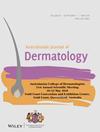Improving Cardiovascular Outcomes in the Psoriasis Cohort. Psoriasis and Cardiovascular Disease–Patient Knowledge, Perspectives and Practice
Abstract
Background and Study Aims
Patient perspectives on psoriasis as a systemic disease, with its heightened risk of cardiovascular disease (CVD), are unclear. Approaches to cardiovascular risk factor screening and management vary in this cohort. This study aimed to ascertain knowledge, practice and perceptions of patients with respect to psoriasis and CVD, CV risk factor screening and management.
Methods
This cross-sectional study consisted of a self-administered questionnaire capturing demographic characteristics, knowledge of the association between psoriasis and CVD, and perspectives on cardiovascular risk factor screening and management. This was distributed to psoriasis patients in public and private clinic settings. The survey data was assessed with the use of descriptive statistics.
Results
A total of 102 patients with psoriasis were surveyed. The majority of respondents were male 52%, (53/102), 46–60 years old 30.4% (31/102), with longstanding psoriasis (> 20 years), 42.2.% (43/102). Most patients nominated a dermatologist in a public hospital setting as the primary clinician responsible for their psoriasis management 71.6% (73/102). A total of 20.6% (21/102) psoriasis patients surveyed indicated knowledge of the association between CVD and psoriasis, and 22.5% (23/102) agreed that psoriasis was associated with worse CVD outcomes compared to the general population. 63.7% (65/102) indicated they had undergone CV risk factor screening in the last year, with most nominating general practitioners (GPs) 38.4% (38/99), followed by cardiologists 14.1% (14/99), then dermatologists 9.1% (9/99), as the clinician who performed this CV RF screening. A total of 68.6% (70/102) responded they did not currently have a treating cardiologist, while 34.3% (35/102) nominated a Cardiologist as their preferred clinician to facilitate CVD risk factor screening/management, 23.5% (24/102) indicated a preference for a multidisciplinary team, 17.6% (18/102) nominated GPs and 6.9% (7/102) nominated the dermatologist.
Conclusion
There is a need for improved patient education regarding the relationship between psoriasis and CVD. Heightened awareness around cardiovascular risk may serve as an impetus for patients to seek relevant cardiovascular risk factor screening, management and pursue healthy lifestyle behaviours.

 求助内容:
求助内容: 应助结果提醒方式:
应助结果提醒方式:


